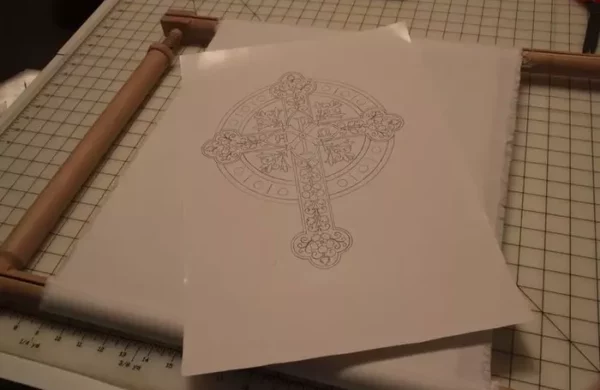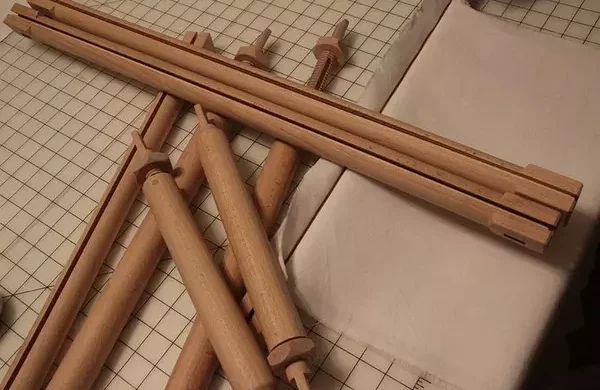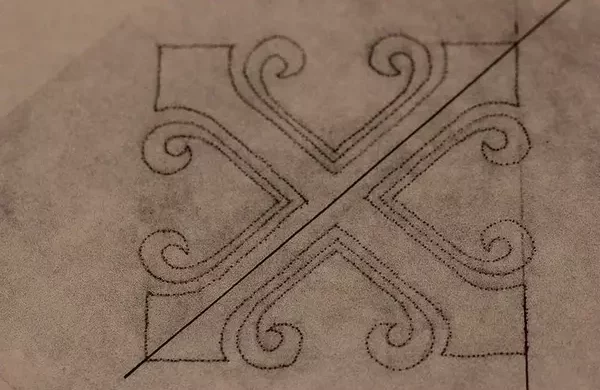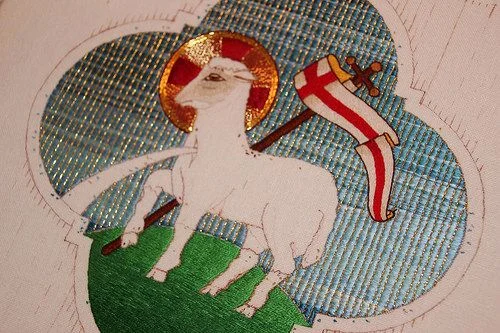
Ecclesiastical Embroidery Design project for the Easter Pulpit Fall is underway. The linen is now framed up, and the pouncing and tracing will soon be complete. Utilizing the Millennium Frames from Needle Needs for the first time, a short video tutorial was a helpful guide. Framing proved a bit tricky with two layers—the Alabaster Linen from Hedgehog Handworks and a layer of Kona Cotton for backing and support. flipping the frame to the backside ensured proper alignment and support for the lining fabric.
Like this:
Like Loading...

Embroidery framing plans face setbacks due to sizing mismatches with Millennium and Evertite Frames. Technical challenges require a new approach. The starting a new Ecclesiastical embroidery project continues with optimism, but obstacles emerge in frame selection and sizing. Despite encountering disappointments the determination to overcome these challenges and find suitable solutions remains steadfast.
Like this:
Like Loading...

Late-night progress in the Ecclesiastical Embroidery project involves perforating the cross pattern for the Purificator. The “prick and pounce” technique is employed, creating tiny, close-together holes for accurate design transfer. A homemade tool, a size 12 crewel needle in a cork, proves effective for this task. The small pattern size contributes to a quicker perforation process.
Like this:
Like Loading...

Making of the Littlest Lamb in The Tale of Two Lambs. Created on Alba Maxima linen from Hedgehog Handworks, this lamb comes to life with stitches and delicate shading. The linen provides a perfect canvas, and the project is stretched on an Evertite Frame. Various hand embroidery techniques, including long and short stitch shading, satin stitch, laid work, goldwork couching, split stitch, and stem stitch outlining, contribute to the lamb’s intricate details.
Like this:
Like Loading...





You must be logged in to post a comment.